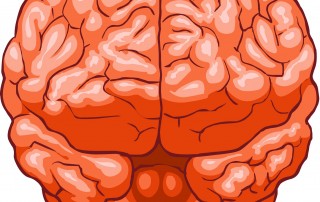My Grade 7 year at Salmo Elementary School was a year of great highs and profound lows. I discovered music for the first time, real popularity, great embarrassment, and of course, girls. Well actually I discovered girls in Kindergarten. That was also the first year that I was involved in any kind of athletic endeavour. I was tall for my age, as were a few of my friends and so when the school formed a basketball team and we played against other elementary schools we dominated. When you have three kids who are almost 6 feet tall in grade 7 and the hoops are only 8 feet tall, it is a recipe for disaster for the other teams. I tried all sports that year as they came up on the calendar, too naïve to realize that most people aren’t good at everything. The sport that was probably the worst match for me physically and mentally was cross-country running. This didn’t stop me from joining the team, of course; any excuse to get out of school or do anything extracurricular was something I would gladly sign up for, even if it meant limping along, drenched in sweat, wanting to puke, while […]
Complex Trauma: When the Whole is More Painful than the Sum of its Parts (PART 2)
Attachment Injuries Now that we have a rudimentary understanding of the necessity for, and basis of attachment behavior, we can begin to discuss attachment injuries and their effects. The term “attachment injury” refers to trauma that occurs within the context of a relationship. In order to understand the impact of relational trauma, consider an analogy from the field of physiology. Lessons From Physiology Proprioception is the body’s sense of where it is in space. It is the cumulative interpretation of the body’s various internal and external sensory systems that allow it to have an accurate assessment of the external enivronment. In layman’s terms, it is the body’s sense that allows a person to walk up the stairs or type at a keyboard without the necessity of visual information. When areas of the body are damaged or injured, this vital sensory ability is one of the first casualties. Musculoskeletal injuries result in impaired functioning of this vital sensory feedback system. This results in the increased likelihood of future injury, as the body has a reduced kinesthetic (body movement) awareness of the injured limb or joint. The parallels between this sensory system and the attachment system are easy to see. Attachment theorists […]
A Virtual Slap: How Words Can Hurt
Facebook for Neurons: The Science of Anxiety
How to Change The Past
One of the most frequently used lines of false consolation that I hear is “you can’t change the past”. Usually this bit of indispensable wisdom is offered as a word of advice when someone is describing the impact of some negative event from their history, something that they wish had never happened and often something that continues to affect them to this day. Of course, this advice and apparent statement of the obvious is rarely helpful, which is not surprising if we look at the gist of this rejoinder. Let’s say you run breathless to the neighbour’s house, pounding on the door. They open the door and ask what’s going on. You tell them that there’s been a terrible accident and you need them to call an ambulance because you think your brother is dead. I don’t think anyone would feel justified or even attempt to rationalize a response such as, “Well, it’s in the past. You can’t change the past. You just have to let it go and get over it.” We would expect that person to offer help, to repair whatever damage had been done, within reason and their capability. Of course we wouldn’t expect them to take […]
From Shame to Compassion: A How-To Guide to Transforming Pain into Progress
The purpose of this post is to introduce a new way of thinking about problematic behavior. Many of us struggle to curb thoughts or behaviors that are ineffective at best and destructively corrosive at worst. We try and try again, only to meet with failure. Most of us throw our hands up and either set about resigning ourselves to the seemingly inevitable disappointing outcome of our existence, or continue to push against the same brick wall, using the same approach that has already proven so ineffective. This is the cycle of pain. Kathryn Schulz, journalist and author spoke at a TED conference about the experience of being wrong. She asked participants in the audience to describe how it felt to be wrong. Predictable answers ensued, focusing on the theme of embarrassment or similar emotions. She then pointed out that this was the experience of discovering that you have made a mistake, not the experience of actually making the mistake. She stated that the actual act of being wrong carries with it no emotion of its own; it only carries the emotion and meaning that we give to it. I would take Schulz’s idea a step further and point out that […]
Validating Your Brain (Part 2)
Read Part 1 here Keep in mind that your brain’s task is to survive the moment, not the long-term. Without fail, the automatic behaviors that our brain engages in are accomplishing this task. However, due to its lack of perspective, the brain does not have the ability to coordinate momentary survival with long-term survival. So when your brain is acting, thinking, and feeling on your behalf, what does it think is happening? When we experience automatic behavioral responses, what is the brain trying to tell us? Think of the following example. The next time you feel an itch on your skin (which will be fairly soon, given that I have now invited you to think about it), try to physically look at the area of your skin that is itchy but DO NOT ITCH IT! Just look at the itchy place. If you can’t physically see it, try to visualize it in your mind as vividly as possible. You may even want to visualize yourself itching it. I can almost guarantee that devoid of any foreign substance interference, if the itch is generated by your brain, looking at it alone will be sufficient intervention to remove it. Give it a […]
Validating Your Brain (Part 1)
rofessor Julie Baumberger, of Capella University, once told me “You are not your brain”. While to many, this statement may at first appear confusing, to me it made perfect sense. The fact that we are able to notice what we are noticing, to think about what we are thinking about (referred to as meta-thinking by hoity-toity academic types) seems to denote some separation between the physical and automatic processes of our lower brain centres and our higher brain centres. Some may take it further and say that it is evidence of the existence of some non-physical part of ourselves, whether it be a synergistic outcome of the firing of neurons or an intangible soul. That is an entirely different discussion and one that will not be tackled here. However, I would like to talk about Dr. Baumberger’s maxim and how we might apply it in a real way to improving our experience of our existence. First, we need to look at our brain and describe what it is and what its purpose is. If it is separate from me, are we on the same page? Do we want the same things? Do we have the same strategies by which we […]








Recent Comments